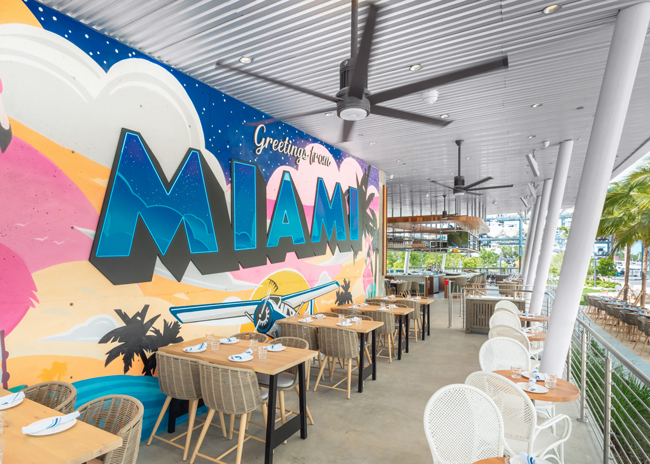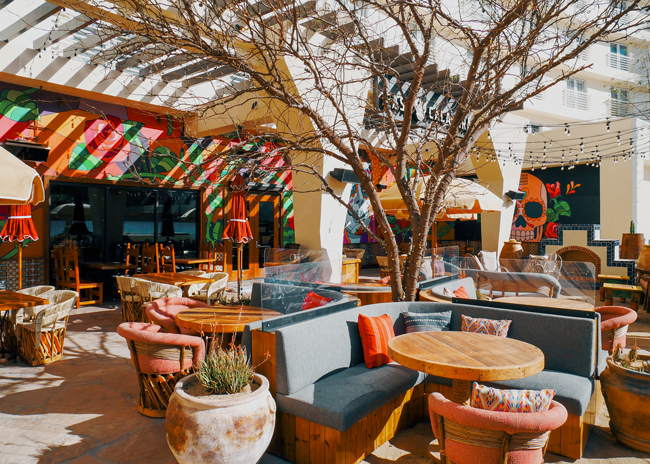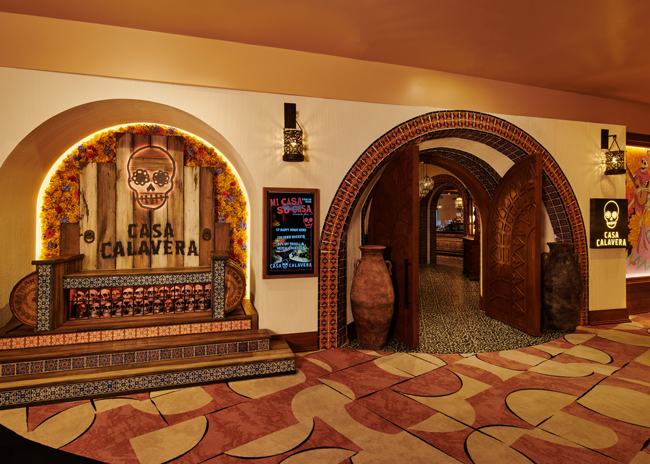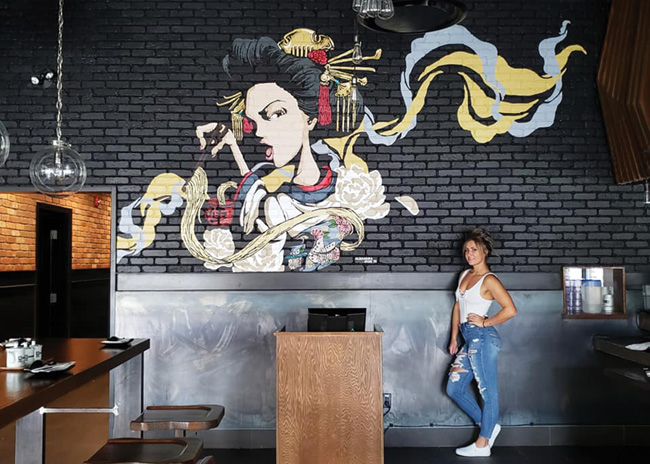 Vincent Celano, principal and founder, Celano Design StudioIn times of great competition for restaurants, what’s important is to get customers to notice your restaurant and to walk through your doors. The easiest way to do that is with appropriate and outstanding exterior design.
Vincent Celano, principal and founder, Celano Design StudioIn times of great competition for restaurants, what’s important is to get customers to notice your restaurant and to walk through your doors. The easiest way to do that is with appropriate and outstanding exterior design.
Vincent Celano, principal and founder, Celano Design Studio in New York City, talks us through some best practices for creating eye-catching exterior design.
1. Establish your brand identity
Brand identity can be established on the exterior of a building overtly – with a name, a logo or brand colors, but sometimes a name isn’t needed since logos are often so recognizable.
It’s also important to mirror colors, materials, patterns from the inside to emphasize the brand without using logos or names.
“Clients are asking for something on the exterior that’s not directly signage,” says Celano. “It’s some component of the design that starts to identify the brand.” He points to Vic’s Las Vegas whose entry façade, featuring a cowboy, “is so identifiable to the brand and has such contrast to the casino and retail elevation. It’s an indoor space [but] we consider it exterior to the concept.”
2. Think near and far
It’s important to capture your audience from near as well as afar, says Celano. “Consider signage that’s more sculptural or part of a building, that can be noticed from far away,” he says, Blades and canopies are a great way to draw eyes from a distance, and make the signage as bold and simple as possible, with color, iconography or a logo.
For the guest who’s closer, create more of a connection to the concept, with window signage and images. Also let guests see directly into the restaurant “so they can see the energy, the vibe, the colors, the product,” Celano explains.
 Bayshore Club located in Miami
Bayshore Club located in Miami
3. Be site-specific
A restaurant needs to fit into its surroundings. Celano points to a restaurant he’s working on in Times Square in New York City, which is a very animated area. Because of this, he’s amplifying the exterior of the restaurant to also be very animated. For a smaller town, he might create a restaurant that blends in to the local vibe in a quieter way.
4. Add some theater
Many restaurants are now featuring outdoor dining but if you can, bring out some food theater. Add grills, tableside cooking, exterior bars that can be wheeled back inside, all of which will draw potential customers’ eyes.
 The patio at Casa Calavera which is located in the Virgin Hotel Las Vegas
The patio at Casa Calavera which is located in the Virgin Hotel Las Vegas
5. Create some mystery
While fast casual and quick-serve restaurants typically give a grand view into their restaurants, higher-end operations do the opposite. Celano likes to create a moment of discovery on the exterior of these restaurants. “We might include super oversized sculptural doors so there’s a moment of transition and a portal to the inside. We don’t give much away,” he says. “We give the perception of exclusivity through that grand entrance.”
6. Provide a glimpse of the inside
 Casa Calavera's entranceCelano likes to give a peek into the inside of higher-end restaurants such as the bar's energy, but sometimes he reveals nothing, for full mystery. Highlighting bars to be seen from the outside, is a great strategy in pedestrian locations like New York City, he points out, and the bar can be specifically designed to be seen from the outside. However, it’s important to not highlight that bar with lighting when it’s empty at 3 p.m., he adds.
Casa Calavera's entranceCelano likes to give a peek into the inside of higher-end restaurants such as the bar's energy, but sometimes he reveals nothing, for full mystery. Highlighting bars to be seen from the outside, is a great strategy in pedestrian locations like New York City, he points out, and the bar can be specifically designed to be seen from the outside. However, it’s important to not highlight that bar with lighting when it’s empty at 3 p.m., he adds.
7. Create a daypart transition with lighting
“Restaurant hospitality is very much about the day-night transition,” says Celano, so be sure to emphasize this via your exterior. “Your restaurant can look like one thing during the day but transforms for the evening for a different experience.” This is particularly important, he says, for restaurants whose menus change for dinner.
Lighting can and should be bold during the day but at night can highlight certain elements of an exterior, creating a warm glow or drama, depending on the concept. It can be very theatrical and choreographed,” Celano says. “It can create a mood.”
For higher-end restaurants, the evening can be a great time to highlight certain exterior features, by focusing the lighting on a carving, a sculpture or even landscaping, he says.
It’s a good idea to layer outdoor lighting, to highlight exterior elements, for functionality, and to create a glow. All three of those make for ideal exterior lighting.
8. Use landscaping wisely
Biophilic design has become very important to restaurants “because it’s a way to create that comfortable vibe without having to do any construction,” says Celano.
And now there are companies that will help maintain it, taking the work away from the restaurant, Celano says. He’s a fan of greenery outside restaurants because it can start the feeling of freshness that will then translate to the menu once customers walk inside.
He likes to use plants that are local and appropriate to an area. What’s used in Phoenix is different to what’s used in Miami or New York, he points out. And local, seasonal greenery, he says, “can mirror the seasonal menu and create the energy specific to a season.”
Greenery can be real or artificial, says Celano, who favors putting artificial plants higher up where customers can’t touch them, or interspersing them with real ones so they’re less obvious.
9. Outdoor dining
Outdoor seating areas such as patios or tables can be a way to reflect the interior or the restaurant and the atmosphere guests will encounter when they walk through the doors, says Celano.
But make sure it is brand-specific. “It should all tie in for a seamless experience,” he says.



